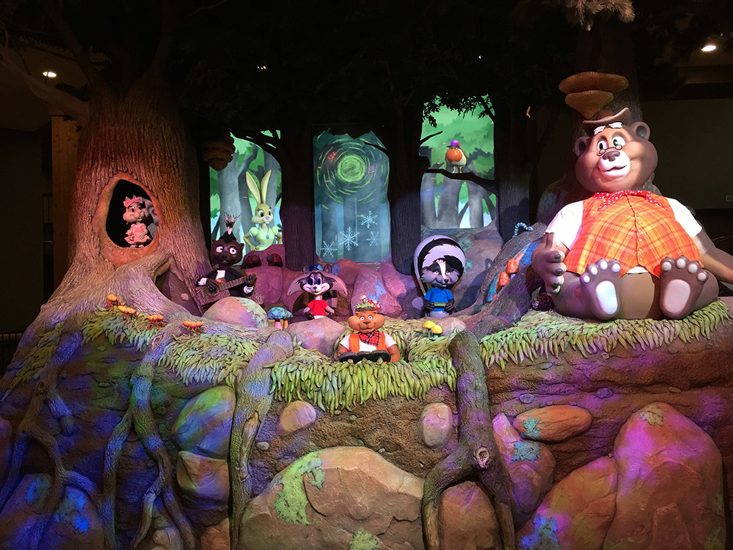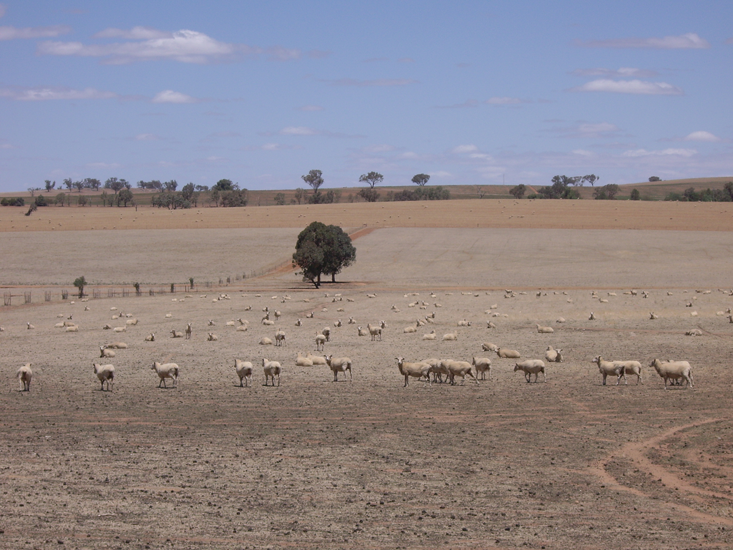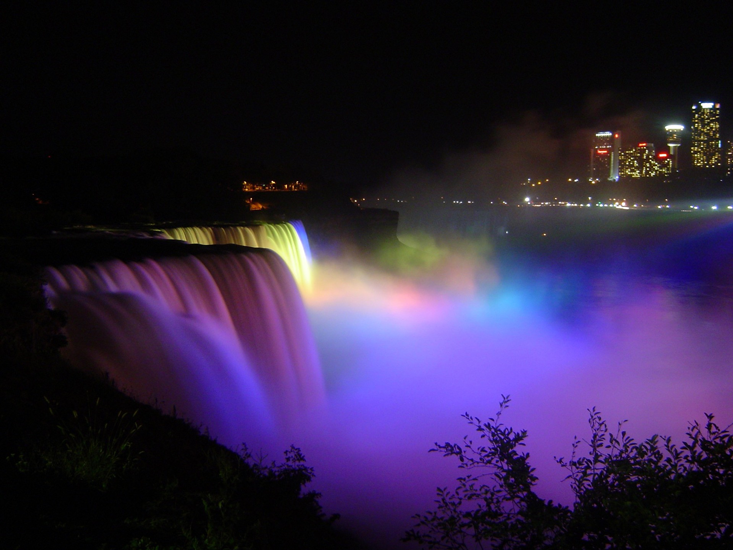Solastalgia is the definitive disease of the 21st century but only a few even know its name. The symptoms include an underlying sense of loss, a vague sensation of being torn from the earth, a general out-of-placeness, homelessness without leaving home. You have probably felt it without knowing what it was. Solastalgia is the unease we inflict on ourselves as we create a world we don’t want to inhabit, a world stripped of nature.
Nature is retreating, and not gradually. According to the World Wildlife Fund, over half of the world’s wild vertebrate species has disappeared over the past forty years. More than 290 million acres of North American grasslands have been converted to agriculture. At current growth rates, US development will reduce its forested regions by about 30 million acres by 2050. The amount of urban land in biodiversity hotspots is expected to increase by three times between 2000 and 2030.
Deeper catastrophes, we know, are lurking. The North Pole has hovered near the freezing point this past winter. The partial breakdown of the Paris Accords, and the sudden spike in the consequences of climate change—icebergs the size of Delaware cracking off Antarctica, the bleaching of the Great Barrier Reef—are forcing us to face a hard truth. The future we are building is one with much less exposure to nature and vastly diminished biodiversity.
And this creates a new problem for us as a species: The experience of nature is integral to our wellbeing and, by destroying the earth, we are making ourselves sick. In 2003, Glenn Albrecht, then an environmental philosopher at the School of Environmental and Life Sciences at the University of Newcastle in Australia, coined the term solastalgia. Much like nostalgia, solastalgia is difficult to define with precision, but is nonetheless instantly recognizable: “Solastalgia,” Albrecht wrote, “is the pain or sickness caused by the loss of, or inability to derive solace from, the present state of one’s home environment. Solastalgia exists when there is recognition that the beloved place in which one resides is under assault.” The type of assault may vary. The force of the assault may vary. The loss and unease that follows in the wake of the assault do not.
Glenn Albrecht chose “solasta” as a new root word for two reasons. “Solasta” contains the sense both of “solace” and “desolation.” Where nostalgia describes a longing for another place and another time, solastalgia is a longing for the now as it should be, for nature when there’s no nature there.
Today solastalgia is going mainstream. For generations, small groups have been responding to the unfolding environmental catastrophe—hippies, off-the-gridders, small political and religious groups—but they were inherently subcultures. The general population could go on arguing about science they didn’t understand and pretending that the earth wasn’t changing. Now the collapse of the natural order is no longer theoretical and we have a new and pressing need for consolation, and a marketplace to serve that need.
If you want to see what kinds of services that marketplace provides, the place to visit is the Great Wolf Lodge in Niagara Falls.

Great Wolf Lodge is a theme park whose theme is the great outdoors. It is hugely successful as a brand of entertainment. There are now 17 Great Wolf Lodge resorts across North America. Centerbridge Partners acquired the chain in 2015 for 1.35 billion. There is no need to go outside at all if you attend Great Wolf Lodge in Niagara Falls in the winter. At night you can stand just outside the front doors and roast marshmallows over a mild gas flame in an artificial fire pit, but that’s pretty much it. Intermittent stands of ragged trees in the massive parking lot are the main experience of nature-in-nature at Great Wolf Lodge.
The lobby does nature much better than nature anyway. For one thing, there’s no cold. In the lobby, it is always the second week of summer camp. The inside of the “Grand Living Room” is like a vastly inflated log cabin. There is a fireplace, again gas-lit, with animatronic wolves that occasionally howl from the imitation stones. Rushing through the front doors, the kids are immediately enraptured by the animatronic scene beside the check-in. A robotic moose and bear and tree engage in an endless futile conversation, spurred whenever a kid presses a hand against an imprint. The bear in the tutu declares, “This is the most magical place in the whole North Woods.”
And the children listen to her promise: “Isn’t this a wonderful place?”
Mo the Moose makes jokes. “What can you wear anytime, anywhere?” “A smile.” This is what nature after nature looks like. The kids watch anthropomorphized robots while their parents hand over their credit cards. Under the lobby check-in line, a little robot squirrel pokes out his head and screams. Hysterical silliness follows. The kids push the button again. The squirrel pokes out his head and screams again, and there’s more silliness. The kids push the button again. The kids love the robot squirrel. For the kids, it’s paradise. It is a solastalgic paradise.
The idea of solastalgia came out of a stripped landscape, that of the Australian droughts of the early aughts. They provided direct evidence of the mental health consequences of climate change. The effects were most acute among indigenous groups, scientists who confront climate change directly, and farmers whose land has been destroyed. In 2006, Nick Higginbotham, a scholar of public health also at Newcastle University, developed with his colleagues a quantitative measurement of “the bio-psycho-social cost of ecosystem disturbance” called the Environmental Distress Scale, or EDS. They defined solastalgia as a response typical of “contexts where one’s physical environment (home) is transformed by forces that undermine identity, well-being, and control,” and measured it by asking respondents to agree or disagree with statements like “I miss having the sense of peace and quiet I once enjoyed in this place,” “[I am] sad that familiar animals and plants are disappearing,” or “[The] thought of my family being forced to leave this place upsets me.”
Higginbotham found that the experience of solastalgia measured this way correlated strongly with other reactions to environmental distress, like fear and anger. Solastalgia, the researchers concluded, appeared to “give clear expression, both philosophically and empirically, to the environmental dimension of human distress.” In the eleven years since Higginbotham’s paper, researchers have uncovered the mental health effects of environmental change in communities around the globe. The effect of warming in Nunatsiavut, in Labrador, has produced solastalgia. In Central Appalachia, the destruction of the mountains and the valley streams by mountaintop removal mining have produced solastalgia.
Climate-connected floods and drought “are often accompanied by anxiety, shock, depression, grief, despair, numbness, aggression, sleep disruptions, interpersonal difficulties, acute and posttraumatic stress disorder, substance abuse, and suicide,” Canadian environmental psychologists noted in 2016. In Asia, psychiatrists have noted that rising temperature is linked with suicide. A 2013 meta-analysis of 60 studies concluded that every standard deviation warming in global temperatures corresponded to a 4 percent rise in interpersonal violence, and a 14 percent rise in intergroup conflict. In 2015, The Lancet, the world’s foremost medical journals, put together the Commission on Health and Climate change, which described solastalgia as a key dimension to global mental health, something that “people experience when their land is damaged and they lose amenity and opportunity.”
Solastalgia is the latest human affliction, and like the other human afflictions before it, it calls out for a cure.

Great Wolf Lodge delivers a cure by presenting a simulacrum of nature. In this sense, it falls into a long tradition. Florence Nightingale, in her Notes on Nursing from 1863, noted the positive effects of patients being able to look out a window, and of “beautiful objects, of variety of objects, and especially of brilliancy of color.” She thought having something natural at your bedside would help you get better. She wasn’t wrong.
Exposure to nature, virtually in any form, has measurable health benefits. Looking at a forest from a window, according to one study in Japan, led to
(i) significantly lower diastolic blood pressure, (ii) significantly higher parasympathetic nervous activity, but significantly lower sympathetic nervous activity, and (iii) significantly lower heart rate.
Since 1982, the Japanese Ministry of Agriculture, Forestry and Fisheries has promoted shinrin-yoku, or “forest bathing.” Topiary therapy has shown results: the level of cortisol, the stress hormone, in the subjects’ saliva diminishes as do their pulse rate and their blood pressure.
A well-cited 1984 study by Roger Ulrich found that patients recovering from surgery benefited from a view of trees as opposed to a blank wall. They had “shorter postoperative hospital stays, had fewer negative evaluative comments from nurses, took fewer moderate and strong analgesic doses, and had slightly lower scores for minor postsurgical complications.” His research is motivating the study of nature-like animations in office buildings to relax workers. Therapeutic landscapes have been used for many years in psychiatric hospitals.
Researchers in population health have understood the connection between green space and a sense of well-being for centuries: “There is a well-developed body of evidence supporting the premise that contact with ‘nature’ provides a range of health benefits for humans.” A 2015 study of self-reported health across the United Kingdom found a strong positive correlation with how scenic the local environment was, even after correcting for socioeconomic indicators and pollution. The “scenicness” was not strictly determined by the amount of green space, leading the researchers to conclude that “the aesthetics of the environment may have a greater practical impact than previously believed.”
The fact is that we’re not sure why, exactly, nature makes us feel so much better. Some have argued that the positive health benefits of forest-bathing were due to the essential oils in the trees themselves, that delicious air that you breathe when you walk through the woods. But those chemical effects don’t explain the already established benefits of men watching forests from their windows. Biodiversity is not, apparently, a requirement.
If you want to understand how humanity deals with its craving for nature, Niagara Falls has always been the ideal place to start looking. It was a forerunner in the history of solastalgia and its consolations. On his visit in 1882, Oscar Wilde described the Falls as “one of [the bride’s] earliest disappointments.” Twelve million visitors arrive every year to the Falls even now when its status as a honeymoon cliché has long ago vanished. The natural spectacle attracts artificial spectacles, too: Tightrope walkers and carnival barkers and Marilyn Monroe and, now, casinos.

At the core of the experience of Niagara Falls is awe. The cataracts are a classic example of the sublime, the overpowering size and scale of nature that makes humanity itself and the puny human observer, and our vanity and struggle, seem negligible. The sublime is spiritually refreshing. It brings the real position of a person in relation to the natural order, absolute puniness, to the forefront of consciousness.
The irony of Niagara Falls is that the sublimity of the experience, the sense of inhuman power of nature, is very much an effect of engineering. Nature, at Niagara Falls, has always been a feat. The exact quantity of water pouring over the Falls is subject to regulation by an International Joint Commission, which decreed, in the 1950 Niagara Treaty, how much of the river should be diverted to hydroelectric and other uses, and how much for aesthetic display. During the high season, April 1 to September 15, the Falls spume 100,000 cubic feet per second, from eight in the morning to ten at night. During the low season, it’s half that.
The Falls has naturally been eroding for 5,500 years, after the melt waters swelled Lake Erie from about half its current size. Natural erosion would, of course, be totally unacceptable to the people who make their living from the current scenery. No one is moving two towns, one on each side of the border, a meter and a half a year just because of nature. So in 1969, the United States Army Corps of Engineers decided to do the most human thing of all: Stop nature altogether. Using a cofferdam, they halted the flow for the first time since an icejam had silenced the Falls in March 1848. At the exposed bottom, they discovered millions of coins and two corpses. A decomposed woman, evidently forgotten, wore a “forget me not” band on her ring finger.
The engineers took samples from the lip and established that, because of the reduced flow from hydroelectric diversion, the erosion would be minimal. Nonetheless, being engineers, they showed they could change the Falls if they wanted to. In 1973, the citizens of Niagara Falls, on the Canadian and American sides, were sent 220,000 brochures with ballots attached. They were presented with several options for modifying the American Falls: Removing the talus at the base, increasing the flow, changing the Maid of the Mist Pool level, or changing nothing. The answer was obvious. They overwhelmingly decided to keep the Falls as they were and are. Nature has to match the photograph.
One of the clearest ways to recognize the existence of solastalgia is recognizing the attempt to recover from it. “The intense desire to be organically connected to living landscapes is, in part, a desire to overcome solastalgia by finding an earthly home in connection with other living things on this Earth,” Albrecht wrote in his 2006 essay. In order to retain the nature of the Falls, the public retained its image, in contravention of nature itself, which would have eroded it to non-existence.
Today the aestheticization of the Falls continues through aggressive spectacle, although the showiness feels increasingly desperate. At night, the mists and the cataracts are the subject of a newly renovated illumination spectacular that cost four million dollars. Illuminating Niagara Falls is one of the first things that human beings did after the discovery of electric light. The Falls’ electric lights turned on for the first time in 1879, the year the light bulb was invented.
The shifting brightness of turquoise and fuchsia make a perfect background for selfies. Again nature must fit the camera, in this case the camera on the phone.

There’s something else for people to do with their phones at Niagara Falls now. Several rare Pokémon have been caught there: Jynxes, Tentacruels, Jolteons. This is the latest form of nature entertainment, and it is massive. Pokémon Go peaked at over 50 million users, and even after the inevitable app cull, one in ten U.S. smartphones still have the game. Last summer, Pokémon Go brought in more money from mobile than Netflix. It is birdwatching without the birds. It is birdwatching with the guarantee of seeing something. A 2002 study in the UK found that children aged 8 and over were far better at identifying Pokémon characters than they were local plants and animals.
Those researchers came to a stark warning for conservationists: “Evidence from elsewhere links loss of knowledge about the natural world to growing isolation from it.” But there was also another message. Pokémon was evidence of what E.O. Wilson called “biophilia,” an innate desire to encounter nature. Niagara Falls contains and monetizes the sublime. Pokémon contains and monetizes biophilia. Great Wolf Lodge contains and monetizes the experience of being outdoors. They all offer the assuagements of nature without nature’s foremost embarrassments: Change and decline.
The aestheticization of nature has given way to a therapeutization. “Nature” as a spectacle has become “nature” as a playspace. Rather than confront we assuage. The end of the solace of real nature means the beginning of the solace of “nature.” Nature as entertainment replaces the wilderness. The market is efficient: We can buy cures from the longings the market creates.
Whether or not this new development in our culture is positive or negative is a moot question; it is what we need to do to survive. “The single most important measure that can be undertaken now is to ‘enhance adaptive capacity,’” is the way one psychiatric assessment of indigenous Australians suffering from solastalgia put the matter. Pokémon, Niagara Falls and the Great Wolf Lodge show our adaptive capacity in action. Our ingenuity, which has orchestrated the catastrophe we are facing, has already found a way around our resulting sense of desolation. Stopping development and climate change are hard. We have found an easier way. We are building a “nature fix.”
Our species has always dreamed of a reconciliation with nature. The root of the word paradise is the Persian word “Pardes,” which means a walled garden. In the Bible, the drama of Genesis is a man and a woman cast out of their existence as beasts and given dominion over nature in suffering. Their purpose is to work to redeem themselves and the world they have been given—to make things “on earth as it is in heaven.” This dream was so powerful that it translated to secular ideologies. All Utopias conceive of a world in which the desires of human beings are at one with the natural order. Instead our domination has extended even over the organic feelings of loss at our domination of nature. But our final destination was always supposed to be “nature.”
Part of solastalgia, surely, must be that we are witnessing the end of that dream. We have chosen the easier path to reconciliation with nature, engineering instead of self-control. We refuse to treat the ragged, beaten world as a home. Instead we are making for ourselves a painted, bubbled, pretend paradise.
The mornings at Great Wolf Lodge, with the children still asleep, are almost peaceful. A soundtrack of woodland rustling drifts over the scene, and no little hands prompt the cartoonish robots to babble. A nonexistent songbird indefinitely trills with regular intervals. The air hums with a decent imitation of tranquility in nature. It reminds you of what it’s like to be beside a lake, in the woods. At the core of the reminiscence is a sadness that it’s all just a reminiscence. A subtle sting hangs over the pleasure of the imitation.
Great Wolf Lodge is “nature” as a perfectly enclosed system. At Great Wolf Lodge, nature is always upselling you. When you return the key to the lockers in the water park, you can have the deposit back or a stuffed animal instead. There is an arcade in the basement, and a bowling alley, and a spa for mother and daughter mani-pedis. There’s a kind of midway, too. It is the perfect symbiosis of “nature” and commerce.
The Lodge represents both an achievement and an abomination. It is a deeper form of control. Just as standing in front of the Falls, the desire for the sublime, for the sense of human smallness, remains, so watching the talking, animatronic moose, there is the sense of the longing to be in the woods. The residue of the wilderness haunts every garden. Maybe every paradise is somebody else’s ruin.
The period of morning calm does not last. The lobby of Great Wolf Lodge fills up with groggy parents and cheerfully hyped children. A kid pushes a button and the show starts up again: “Isn’t this a wonderful place?” asks the bear in the tutu.
Stephen Marche is a writer in Toronto. His latest book is The Unmade Bed: The Messy Truth About Men and Women in the Twenty First Century.
Lead photo collage credits: Per Breiehagen / Getty Images; Pixabay






























